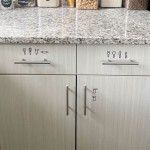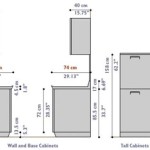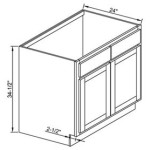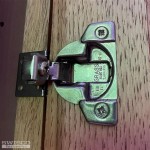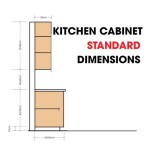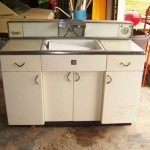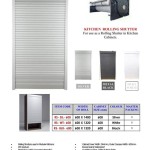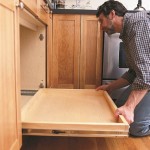Glass Design For Kitchen Cabinets: Enhancing Aesthetics and Functionality
Glass design in kitchen cabinets has evolved beyond mere visibility, becoming a sophisticated element that contributes significantly to the overall aesthetic and functionality of the kitchen. Incorporating glass elements into cabinets can transform a mundane storage solution into a striking focal point, adding depth, light, and a touch of elegance to the space. This article will explore the various types of glass used in kitchen cabinets, the design considerations involved, and the advantages and disadvantages of incorporating glass into kitchen cabinetry.
Historically, glass in kitchen cabinets served primarily a practical purpose: allowing homeowners to easily view and locate stored items. Clear glass was the predominant choice. However, contemporary design trends have broadened the scope of glass usage, introducing a wide range of styles, textures, and colors. From frosted and etched glass to stained and leaded options, the design possibilities are virtually limitless. This evolution has transformed glass from a purely functional component to a key design element that can significantly impact the kitchen's overall style and ambiance.
The selection of glass for kitchen cabinets requires careful consideration of several factors, including the desired aesthetic, the level of privacy required, and the overall style of the kitchen. The use of glass can affect the perception of space, create visual interest, and even influence the amount of natural light within the kitchen. It's crucial to understand the characteristics of different glass types and how they can be used to achieve specific design goals.
Types of Glass Used in Kitchen Cabinets
A diverse range of glass types are employed in kitchen cabinet design, each offering unique characteristics and aesthetic properties. Understanding these differences is crucial in selecting the appropriate glass to complement the kitchen’s overall theme and meet specific functional requirements.
Clear Glass: This is the most basic type of glass and offers unobstructed visibility into the cabinet's contents. It is a popular choice for displaying fine china, glassware, or collections. However, clear glass also reveals any clutter or disorganization within the cabinets, requiring a high level of tidiness. It allows maximum light transmission and can make a small kitchen feel more open and spacious.
Frosted Glass: Frosted glass provides a degree of privacy while still allowing light to pass through. The frosted finish obscures the view of the cabinet's contents, concealing clutter and creating a softer, more diffused light effect. This type of glass is often favored in kitchens where a cleaner, more minimalist aesthetic is desired. It can be achieved through acid etching or sandblasting, resulting in a smooth, textured surface.
Etched Glass: Etched glass involves creating patterns or designs on the glass surface using acid or sandblasting. The level of detail and complexity can range from simple geometric shapes to intricate floral motifs. Etched glass adds a decorative element to the cabinets and can be customized to complement the kitchen’s style. It offers a balance between privacy and visibility, allowing some light to pass through while obscuring the view of the contents.
Leaded Glass: Leaded glass involves joining pieces of glass together with lead came to create decorative designs. It is often associated with traditional or vintage kitchen styles and can feature intricate patterns, colored glass accents, and textured surfaces. Leaded glass adds a touch of elegance and sophistication to the kitchen, creating a focal point and enhancing the overall character of the space. It's generally more expensive than other glass options due to the labor-intensive manufacturing process.
Stained Glass: Stained glass involves applying colored pigments to glass to create vibrant and artistic designs. It is often used to add a pop of color and visual interest to the kitchen. Stained glass can be custom-designed to reflect the homeowner’s personal style and preferences. It is a relatively expensive option and is best suited for kitchens where a bold and unique statement is desired.
Seeded Glass: Seeded glass contains small bubbles or "seeds" within the glass, creating a textured and slightly distorted appearance. This type of glass adds character and a rustic charm to the kitchen. It is often used in country-style or farmhouse kitchens. Seeded glass allows light to pass through while obscuring the view of the contents, providing a balance between privacy and visibility.
Tempered Glass: Tempered glass is a safety glass that is significantly stronger than regular glass. It is designed to shatter into small, blunt pieces when broken, reducing the risk of injury. Tempered glass is a recommended option for kitchen cabinets, especially in households with children or pets. While it can be used as clear glass, it can also be frosted or etched for enhanced aesthetics.
Design Considerations for Glass Kitchen Cabinets
Integrating glass into kitchen cabinets requires careful planning and consideration of several design elements. The placement of glass cabinets, the style of the doors, and the overall kitchen layout all play a role in achieving a cohesive and visually appealing design.
Placement and Proportion: Strategic placement of glass cabinets can significantly impact the perceived size and openness of the kitchen. Placing glass cabinets at eye-level can draw the eye upwards, creating a sense of height and spaciousness. Pairing glass cabinets with solid door cabinets balances visual interest and reduces the overwhelming effect of too much transparency. It is important to consider the proportions of the glass panels to ensure they complement the size and style of the cabinets.
Lighting: Internal cabinet lighting amplifies the impact of glass doors. Lighting can highlight displayed items, creating a warm and inviting ambiance. Options include LED strip lighting, puck lights, and recessed lighting. The color temperature of the lighting should complement the kitchen's overall color scheme. Warm lighting creates a cozy atmosphere, while cool lighting provides a more modern and sophisticated feel. Glass shelves within the cabinets, lit from above, can create a dramatic display.
Hardware: The choice of cabinet hardware, such as knobs and pulls, should complement the glass design. Sleek and minimalist hardware works well with modern glass designs, while ornate and decorative hardware complements traditional or vintage glass styles. The finish of the hardware should coordinate with the other metal elements in the kitchen, such as the faucet, appliances, and light fixtures.
Cabinet Style and Framing: The style of the cabinet doors and the framing around the glass panels contribute significantly to the overall aesthetic. Frameless cabinets offer a sleek and contemporary look, while framed cabinets provide a more traditional or transitional style. The frame material, such as wood or metal, should complement the kitchen's design. The profile of the frame can vary from simple and clean lines to ornate and decorative details.
Interior Organization: Because glass cabinets display the contents, meticulous organization are essential. Utilizing organizational tools, such as shelf dividers, risers, and clear storage containers, can help maintain a tidy and visually appealing display. De-cluttering regularly and arranging items in a cohesive manner is also important. Consider grouping similar items together and arranging them by color, size, or shape.
Color Palette: The color palette of the kitchen should be considered when selecting glass for the cabinets. Clear glass works well with any color scheme, while frosted or etched glass can soften the impact of bold colors. Stained glass can introduce pops of color and create a focal point. The color of the cabinet interiors should also be considered, as it will be visible through the glass. Neutral colors, such as white or grey, provide a clean and versatile backdrop.
Advantages and Disadvantages of Glass Kitchen Cabinets
Like any design element, glass kitchen cabinets offer both advantages and disadvantages. Weighing these factors is essential to determine if incorporating glass is the right choice for a particular kitchen and lifestyle.
Advantages:
- Enhanced Aesthetics: Glass adds a touch of elegance and sophistication to the kitchen, creating a focal point and enhancing the overall visual appeal.
- Increased Light: Glass allows natural light to penetrate deeper into the kitchen, making the space feel brighter and more open.
- Display Opportunities: Glass cabinets offer a unique opportunity to display fine china, glassware, or collections, adding personal touches to the kitchen.
- Perceived Space: Glass can create the illusion of more space, making a small kitchen feel larger and less cramped.
- Modern Look: The incorporation of glass contributes to a modern and updated kitchen design.
Disadvantages:
- Maintenance: Glass requires regular cleaning to maintain its clarity and shine. Fingerprints, smudges, and dust can be easily visible on glass surfaces.
- Visibility of Clutter: Glass cabinets expose any clutter or disorganization within the cabinets, requiring a high level of tidiness.
- Fragility: Glass is more fragile than wood or other cabinet materials and can be susceptible to breakage.
- Cost: Glass cabinets are generally more expensive than solid door cabinets, especially when considering custom designs or specialized glass types.
- Privacy: Clear glass offers no privacy and requires careful consideration of what is being stored within the cabinets.
Ultimately, the decision to incorporate glass into kitchen cabinets is a personal one, based on individual preferences, lifestyle, and budget. By carefully considering the various types of glass, design considerations, and advantages and disadvantages, homeowners can make an informed decision that enhances the beauty and functionality of their kitchens.

Kitchens Make A Fashionable Statement With Bendheim Cabinet Glass

Neutral Fall Decorating My Home Tour Sanctuary Decor Glass Kitchen Cabinets Style How To

How To Make Your Kitchen Beautiful With Glass Cabinet Doors Heather Hungeling Design

5 Types Of Glass Kitchen Cabinets To Elevate Your Home Décor

Types Of Glass You Can Use For Your Kitchen Cabinetry Hipcouch Complete Interiors Furniture

Glass Front Kitchen Cabinets Design Ideas

Glass In Kitchen Cabinet Doors Can Be A Place For Art

Glass Kitchen Cabinets For Your Modular Interiors Beautiful Homes

Eight Elegant Ways To Design Glass Fronted Kitchen Cabinets

How To Style Glass Kitchen Cabinets Sanctuary Home Decor
Related Posts

